________________________________________________________________________
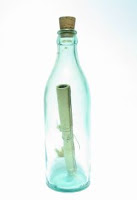 You have a story to tell. Your company has developed a revolutionary new product, or an improved version of one that is known and respected in the marketplace. Most companies are media-savvy enough to take a proactive approach to publicity. Yet there are many firms that instead sit on a new development, waiting for the press to come to them because they are unsure of how to “break the news.”
You have a story to tell. Your company has developed a revolutionary new product, or an improved version of one that is known and respected in the marketplace. Most companies are media-savvy enough to take a proactive approach to publicity. Yet there are many firms that instead sit on a new development, waiting for the press to come to them because they are unsure of how to “break the news.”
The vehicle for the announcement is critical. One should avoid the “shot-gun” approach to publicity. In most cases, a technique referred to as “editorial cultivation” works. Determine the appropriate initial outlet - a magazine or newspaper, for instance - and approach that venue with your story. Once the story breaks via your primary media choice, other vehicles can, and usually will follow.
There is nothing wrong with the standard news release, except that most are written without first contacting the appropriate editor at the preferred publication. The first hurdle is deciding who to contact.
Finding your target audience
Establish your subject and audience. Once you have done so, the job becomes a matter of prioritizing the several most important print outlets for your story. If you already know your audience’s preferred industry publication, put it on the top of your list. For backups, refer to a directory like Bacon’s Magazine Directory, The Ayer Directory of Publications, or Ulrich’s International Periodicals Directory, all of which provide names of the leading magazines and journals listed under each industry. For each specific magazine, in addition to circulation figures, these sources list the outlet’s primary editorial contacts, including addresses, phone numbers and e-mail addresses.
Weigh the impact, immediacy and relevance of your story. In some cases, your news may have an impact on a wider marketplace and editorial audience than the sphere of influence of a trade magazine. Examples would be a merger, an acquisition or an initial public offering. Such news must be immediately disseminated. The best avenues may be: a national newspaper such as The New York Times, Wall Street Journal or USA Today; a national wire service, such as The Associated Press or Reuters; a business wire such as Dow Jones or Bloomberg; a business magazine like Business Week or Industry Week; or even a national news magazine such as Time, Newsweek or U.S. News & World Report.
A number of Internet resources through which breaking news can be disseminated quickly are the PR Newswire http://www.prnewswire.com and Businesswire http://businesswire.com. PR Newswire and Businesswire will carry a story over their wires and on the Internet for a fee paid by the source. Newswires provide the “insurance policy” that a story will definitely get out. Even if the article is printed in a newspaper or magazine, the newswire provides a good secondary backup for the dissemination, and the article will appear exactly as it has been provided to these outlets.
News releases, especially informative, well-written and succinct ones, are the sources of the majority of ideas and leads for a trade magazine editor. The news releases should be written in what is called the “inverted pyramid” style, with the “fattest,” most pertinent facts on top, and the less salient facts further down. The headline should capture the essence of the story, and the subheadings should clarify the impact.
For a technical news article, details are vital. Keep them as clear as possible; and translate technical jargon and “buzzwords” specific to a certain segment of the industry you are targeting, into terms that even a lay person can understand.
Reach out and touch someone
For trade magazines and national news magazines alike, the initial phone call - or “cold call” - must be well-planned. Develop a pitch, or verbal presentation, that informs the editor of the significance of the story, and its relevance to his or her outlet. Keep your pitch short, succinct and newsworthy. Just as you would write a news release with the “fattest” or most pertinent facts on top, organize your verbal pitch to give the most important and interesting details right at the beginning.
One thing I do for all of my pitching is to capture in my mind the “essence,” “vision” and “overview” of the story, especially in the context of the news of the day and the aspect of the story that may be “evolutionary” or “revolutionary” in the context of historical perspective.
Try to keep the tone conversational. Communicate your story in a clear, concise, yet enthusiastic fashion. Point to the relevance and impact of your story on the editor’s readership, as well as to what is new and unusual about its content. If the editor “bites,” or at least seems interested, offer it as a first-exclusive if this particular media outlet is a prominent one and important to your organization. In all cases, be prepared to e-mail or fax the information, and send photos, technical illustrations or diagrams to visually describe technical information. Schedule interviews between the editor and your spokesperson if this is requested, or if it’s important to your organization to get its representative quoted.
Try to avoid voicemail, unless you have honed the pitch to a point where it is brief, clearly worded and convincing. Voicemail is a notorious playing field for “phone tag” and does not allow you to ask follow-up questions or to gauge the editor’s response, thereby fine-tuning your own approach. Voicemail is also used by some journalists as a method to “screen out” calls. Leaving a voicemail message supplemented and elucidated by an e-mail message does make sense, and in my experience e-mail often works, particularly after a live conversation has occurred (no matter how brief) or voicemail message has been left. After an initial communication, whether by voice and/or e-mail, follow-up in a day or two if you’ve not yet heard back from the editor.
Etiquette and other matters
Respect deadlines. If you reach the editor live, and you discover he or she is near deadline, immediately indicate that you’ll return the call later. Better yet, learn in advance when that magazine’s deadline is occurring, and avoid reaching the editor at that time. If you do call at a good time, be personable, keep your pitch brief and relevant.
Know your story. Keep your enthusiasm high (but stay centered), and make sure you understand the story thoroughly. Confidence in the importance and viability of the story always communicates over the phone. Be warm, polite, professional and clear. If the editor is in a bad mood, be astute enough to know that you are not the cause.
If the news is very important to the company, the person entrusted with the call should be someone who has public relations or prior journalistic experience. It is prudent for a professional communicator to initiate the approach and deal with the editor as the primary contact. If the editor requires someone with technical expertise and in-depth knowledge of the technology, an expert’s name and contact information should be provided for a follow-up interview. Media relations representatives should always lead the editor back to themselves as the primary contact. And, this is important: as the media relations rep, remember in very “hot” news stories with short deadlines to get out of the editor’s way once you’ve “pitched” and “sold” the story. After that, see yourself as an “assistant” in helping the editor get the facts and the interviews, end of story. Don’t try to manipulate the story or get in the editor’s way, in any way. You’ll be respected for that, and will be able to come back to that person in good graces in the future.
On some occasions, the reporter or editor may wish to speak to the chief executive officer (CEO). If this happens, know in advance if the CEO is available for an interview. If so, make sure that he or she is prepared, as some CEOs may not be seasoned spokespersons. In this case, a conference call could be arranged between the CEO, p.r. representative and the editor.
Listen to the editor. Whether you initiate a cold call, speak to an editor calling in response to an e-mail message, or receive a cold call from an editor who is querying about a story or lead obtained through the newswire, it is as important to listen as it is to talk. Be sensitive to any verbal feedback, cues or clues that can assist you in fine-tuning your response.
Respect the “no” and be prepared for it. After an initial rejection, ask quick, important questions: “What is it about this story that doesn’t seem right for you? Is there any way this story can be adapted to better suit your needs?” Suggest changes. Best of all, prepare three to five different angles in advance, as this reduces chances for rejection.
What may be appropriate for one editor may not be appropriate for another. Before concluding a conversation, ask if the news might be more appropriate for someone else with a different beat, or in a different section of the magazine. If referred to a new person, introduce yourself by way of that referral. If you have exhausted all your angles to a story, thank the editor for his or her time and release yourself from this connection. Sour the contact, and it will be difficult, if not impossible, to maintain a credible relationship in the future.
Cultivate your contacts. Whenever feasible, try to meet the editors and reporters who are important to you. Offer to take them out to lunch, but do not be insulted if they decline. The better you get to know the journalist on a one-to-one basis, the better your chances of winning a receptive ear.
Do not be discouraged by the rejection of a story idea. If is far more important to keep the channels of communication open. Record the vital information about your journalistic contact in a Rolodex or software address book, such as Sharkware. Also, supply your most important contacts with your home phone number and/or cell phone number, signaling them that you can be reached after business hours. This practice communicates professionalism and reinforces your reputation as someone who goes “beyond the call of duty” to meet editorial needs.
Packing the punch. If your company is one of the fortunate few whose news is printed in a national publication, the story automatically becomes a prime candidate for the leading magazines within your industry, as well as for generic print and broadcast media. Remember, too, that broadcast often follows print (especially if you’ve placed a major wire service story or placed a story in a USA Today or Time Magazine).
When working with the media, remember to do your homework, hone your pitch and maintain a positive attitude.
THE PUBLIC RELATIONS CHECKLIST
* News releases should be double-spaced. Include the media contact’s name, phone number and e-mail, as well as the date and location from which the story originates.
* If a new product is being announced, include all operating parameters. Clearly described how the product works and how it differs from what currently exists in the marketplace. Do this by quantifying the benefits and advantages of this product and comparing it with competing technologies. Stress the user or customer benefits, and explain tangible results.
* Avoid terms such as cheaper, more efficient, fastest, unique and revolutionary without providing parameters by which these benefits can be measured.
* Products or other news leads should tie in with current trends or larger- scope news stories.
* Do not use acronyms without spelling them out, or buzz words without explaining them for the layman.
* For financial news releases, focus more on how the takeover, merger or acquisition will impact the reader or the marketplace, as opposed to the details about money and market shares.
* Provide quotes from executives who can comment on both technical and market information. And always go to the bottom of the line in asking.
* Use photos, charts, graphs or tables, with captions and information, to elaborate upon your story, especially if this is a new trend.
* Ask the journalist what he or she will require to make the interview successful.
Mike Schwage is President of Worldlink Media Consultants, Inc., based in Ft. Lauderdale, Florida. He is an accomplished veteran of media interview training, and has conducted successful trainings for scores of CEO’s and other senior executives, politicians, celebrities and authors.
Article : Source.
Public Relations Tips on How to Effectively Convey a Message
________________________________________
 You have a story to tell. Your company has developed a revolutionary new product, or an improved version of one that is known and respected in the marketplace. Most companies are media-savvy enough to take a proactive approach to publicity. Yet there are many firms that instead sit on a new development, waiting for the press to come to them because they are unsure of how to “break the news.”
You have a story to tell. Your company has developed a revolutionary new product, or an improved version of one that is known and respected in the marketplace. Most companies are media-savvy enough to take a proactive approach to publicity. Yet there are many firms that instead sit on a new development, waiting for the press to come to them because they are unsure of how to “break the news.”The vehicle for the announcement is critical. One should avoid the “shot-gun” approach to publicity. In most cases, a technique referred to as “editorial cultivation” works. Determine the appropriate initial outlet - a magazine or newspaper, for instance - and approach that venue with your story. Once the story breaks via your primary media choice, other vehicles can, and usually will follow.
There is nothing wrong with the standard news release, except that most are written without first contacting the appropriate editor at the preferred publication. The first hurdle is deciding who to contact.
Finding your target audience
Establish your subject and audience. Once you have done so, the job becomes a matter of prioritizing the several most important print outlets for your story. If you already know your audience’s preferred industry publication, put it on the top of your list. For backups, refer to a directory like Bacon’s Magazine Directory, The Ayer Directory of Publications, or Ulrich’s International Periodicals Directory, all of which provide names of the leading magazines and journals listed under each industry. For each specific magazine, in addition to circulation figures, these sources list the outlet’s primary editorial contacts, including addresses, phone numbers and e-mail addresses.
Weigh the impact, immediacy and relevance of your story. In some cases, your news may have an impact on a wider marketplace and editorial audience than the sphere of influence of a trade magazine. Examples would be a merger, an acquisition or an initial public offering. Such news must be immediately disseminated. The best avenues may be: a national newspaper such as The New York Times, Wall Street Journal or USA Today; a national wire service, such as The Associated Press or Reuters; a business wire such as Dow Jones or Bloomberg; a business magazine like Business Week or Industry Week; or even a national news magazine such as Time, Newsweek or U.S. News & World Report.
A number of Internet resources through which breaking news can be disseminated quickly are the PR Newswire http://www.prnewswire.com and Businesswire http://businesswire.com. PR Newswire and Businesswire will carry a story over their wires and on the Internet for a fee paid by the source. Newswires provide the “insurance policy” that a story will definitely get out. Even if the article is printed in a newspaper or magazine, the newswire provides a good secondary backup for the dissemination, and the article will appear exactly as it has been provided to these outlets.
News releases, especially informative, well-written and succinct ones, are the sources of the majority of ideas and leads for a trade magazine editor. The news releases should be written in what is called the “inverted pyramid” style, with the “fattest,” most pertinent facts on top, and the less salient facts further down. The headline should capture the essence of the story, and the subheadings should clarify the impact.
For a technical news article, details are vital. Keep them as clear as possible; and translate technical jargon and “buzzwords” specific to a certain segment of the industry you are targeting, into terms that even a lay person can understand.
Reach out and touch someone
For trade magazines and national news magazines alike, the initial phone call - or “cold call” - must be well-planned. Develop a pitch, or verbal presentation, that informs the editor of the significance of the story, and its relevance to his or her outlet. Keep your pitch short, succinct and newsworthy. Just as you would write a news release with the “fattest” or most pertinent facts on top, organize your verbal pitch to give the most important and interesting details right at the beginning.
One thing I do for all of my pitching is to capture in my mind the “essence,” “vision” and “overview” of the story, especially in the context of the news of the day and the aspect of the story that may be “evolutionary” or “revolutionary” in the context of historical perspective.
Try to keep the tone conversational. Communicate your story in a clear, concise, yet enthusiastic fashion. Point to the relevance and impact of your story on the editor’s readership, as well as to what is new and unusual about its content. If the editor “bites,” or at least seems interested, offer it as a first-exclusive if this particular media outlet is a prominent one and important to your organization. In all cases, be prepared to e-mail or fax the information, and send photos, technical illustrations or diagrams to visually describe technical information. Schedule interviews between the editor and your spokesperson if this is requested, or if it’s important to your organization to get its representative quoted.
Try to avoid voicemail, unless you have honed the pitch to a point where it is brief, clearly worded and convincing. Voicemail is a notorious playing field for “phone tag” and does not allow you to ask follow-up questions or to gauge the editor’s response, thereby fine-tuning your own approach. Voicemail is also used by some journalists as a method to “screen out” calls. Leaving a voicemail message supplemented and elucidated by an e-mail message does make sense, and in my experience e-mail often works, particularly after a live conversation has occurred (no matter how brief) or voicemail message has been left. After an initial communication, whether by voice and/or e-mail, follow-up in a day or two if you’ve not yet heard back from the editor.
Etiquette and other matters
Respect deadlines. If you reach the editor live, and you discover he or she is near deadline, immediately indicate that you’ll return the call later. Better yet, learn in advance when that magazine’s deadline is occurring, and avoid reaching the editor at that time. If you do call at a good time, be personable, keep your pitch brief and relevant.
Know your story. Keep your enthusiasm high (but stay centered), and make sure you understand the story thoroughly. Confidence in the importance and viability of the story always communicates over the phone. Be warm, polite, professional and clear. If the editor is in a bad mood, be astute enough to know that you are not the cause.
If the news is very important to the company, the person entrusted with the call should be someone who has public relations or prior journalistic experience. It is prudent for a professional communicator to initiate the approach and deal with the editor as the primary contact. If the editor requires someone with technical expertise and in-depth knowledge of the technology, an expert’s name and contact information should be provided for a follow-up interview. Media relations representatives should always lead the editor back to themselves as the primary contact. And, this is important: as the media relations rep, remember in very “hot” news stories with short deadlines to get out of the editor’s way once you’ve “pitched” and “sold” the story. After that, see yourself as an “assistant” in helping the editor get the facts and the interviews, end of story. Don’t try to manipulate the story or get in the editor’s way, in any way. You’ll be respected for that, and will be able to come back to that person in good graces in the future.
On some occasions, the reporter or editor may wish to speak to the chief executive officer (CEO). If this happens, know in advance if the CEO is available for an interview. If so, make sure that he or she is prepared, as some CEOs may not be seasoned spokespersons. In this case, a conference call could be arranged between the CEO, p.r. representative and the editor.
Listen to the editor. Whether you initiate a cold call, speak to an editor calling in response to an e-mail message, or receive a cold call from an editor who is querying about a story or lead obtained through the newswire, it is as important to listen as it is to talk. Be sensitive to any verbal feedback, cues or clues that can assist you in fine-tuning your response.
Respect the “no” and be prepared for it. After an initial rejection, ask quick, important questions: “What is it about this story that doesn’t seem right for you? Is there any way this story can be adapted to better suit your needs?” Suggest changes. Best of all, prepare three to five different angles in advance, as this reduces chances for rejection.
What may be appropriate for one editor may not be appropriate for another. Before concluding a conversation, ask if the news might be more appropriate for someone else with a different beat, or in a different section of the magazine. If referred to a new person, introduce yourself by way of that referral. If you have exhausted all your angles to a story, thank the editor for his or her time and release yourself from this connection. Sour the contact, and it will be difficult, if not impossible, to maintain a credible relationship in the future.
Cultivate your contacts. Whenever feasible, try to meet the editors and reporters who are important to you. Offer to take them out to lunch, but do not be insulted if they decline. The better you get to know the journalist on a one-to-one basis, the better your chances of winning a receptive ear.
Do not be discouraged by the rejection of a story idea. If is far more important to keep the channels of communication open. Record the vital information about your journalistic contact in a Rolodex or software address book, such as Sharkware. Also, supply your most important contacts with your home phone number and/or cell phone number, signaling them that you can be reached after business hours. This practice communicates professionalism and reinforces your reputation as someone who goes “beyond the call of duty” to meet editorial needs.
Packing the punch. If your company is one of the fortunate few whose news is printed in a national publication, the story automatically becomes a prime candidate for the leading magazines within your industry, as well as for generic print and broadcast media. Remember, too, that broadcast often follows print (especially if you’ve placed a major wire service story or placed a story in a USA Today or Time Magazine).
When working with the media, remember to do your homework, hone your pitch and maintain a positive attitude.
THE PUBLIC RELATIONS CHECKLIST
* News releases should be double-spaced. Include the media contact’s name, phone number and e-mail, as well as the date and location from which the story originates.
* If a new product is being announced, include all operating parameters. Clearly described how the product works and how it differs from what currently exists in the marketplace. Do this by quantifying the benefits and advantages of this product and comparing it with competing technologies. Stress the user or customer benefits, and explain tangible results.
* Avoid terms such as cheaper, more efficient, fastest, unique and revolutionary without providing parameters by which these benefits can be measured.
* Products or other news leads should tie in with current trends or larger- scope news stories.
* Do not use acronyms without spelling them out, or buzz words without explaining them for the layman.
* For financial news releases, focus more on how the takeover, merger or acquisition will impact the reader or the marketplace, as opposed to the details about money and market shares.
* Provide quotes from executives who can comment on both technical and market information. And always go to the bottom of the line in asking.
* Use photos, charts, graphs or tables, with captions and information, to elaborate upon your story, especially if this is a new trend.
* Ask the journalist what he or she will require to make the interview successful.
Mike Schwage is President of Worldlink Media Consultants, Inc., based in Ft. Lauderdale, Florida. He is an accomplished veteran of media interview training, and has conducted successful trainings for scores of CEO’s and other senior executives, politicians, celebrities and authors.
Article : Source.
Tags: public relations, effective messages, PR
Subscribe to:
Post Comments (Atom)

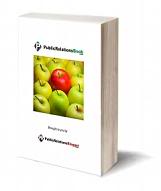
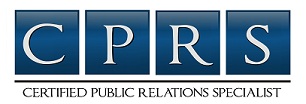

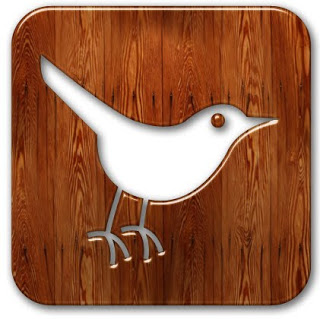
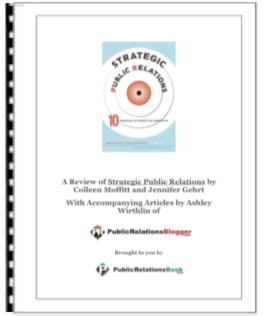
Comments (0)
Post a Comment